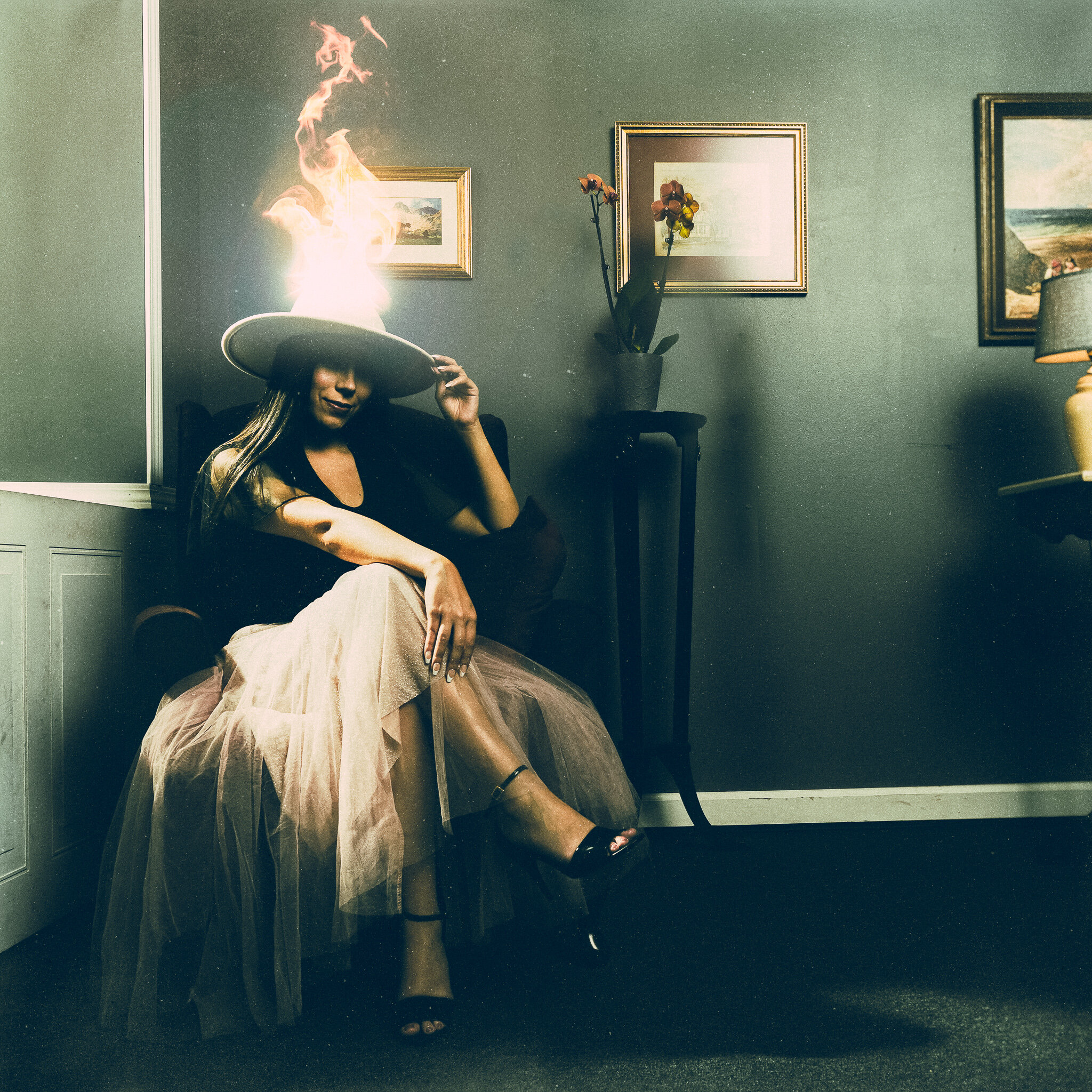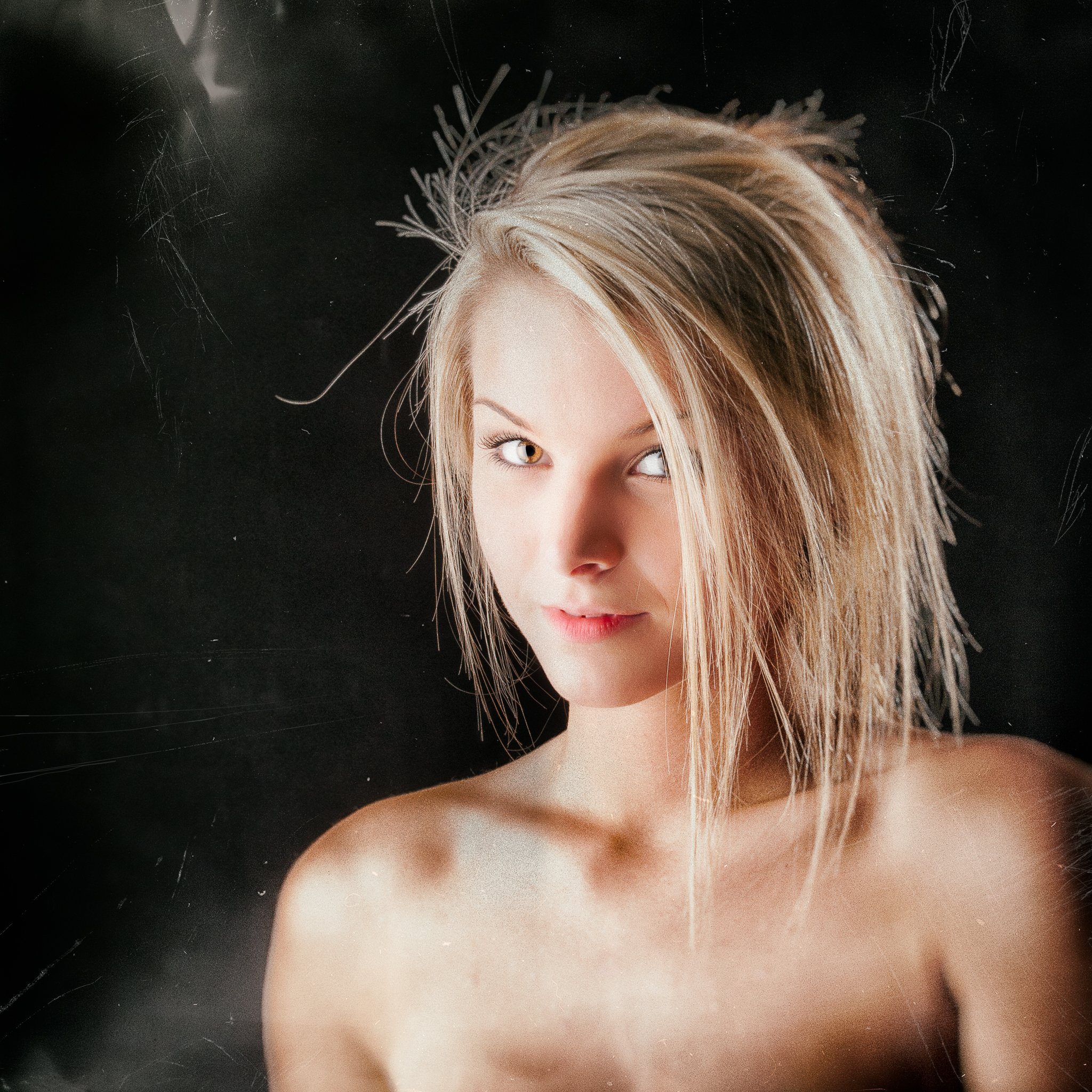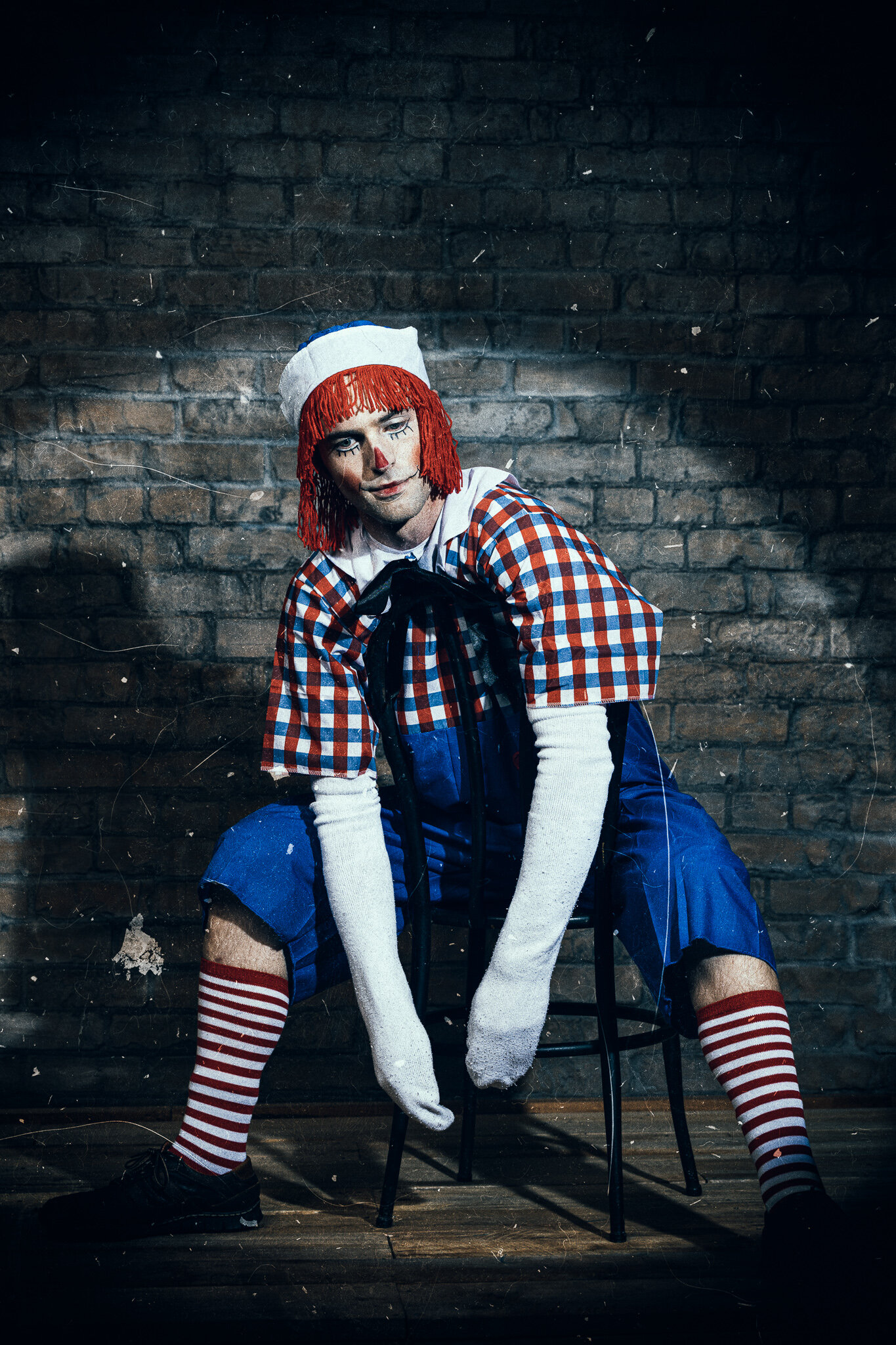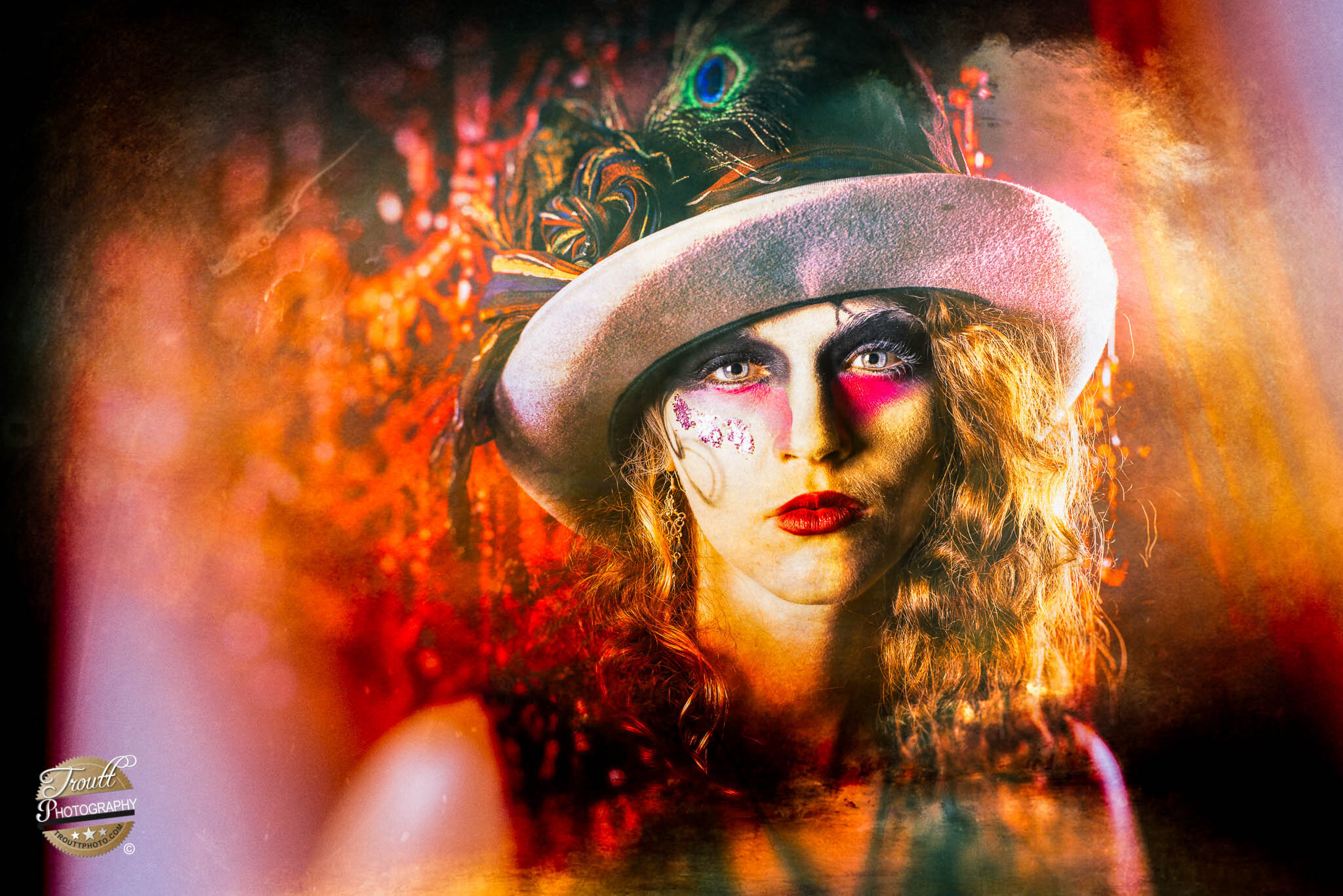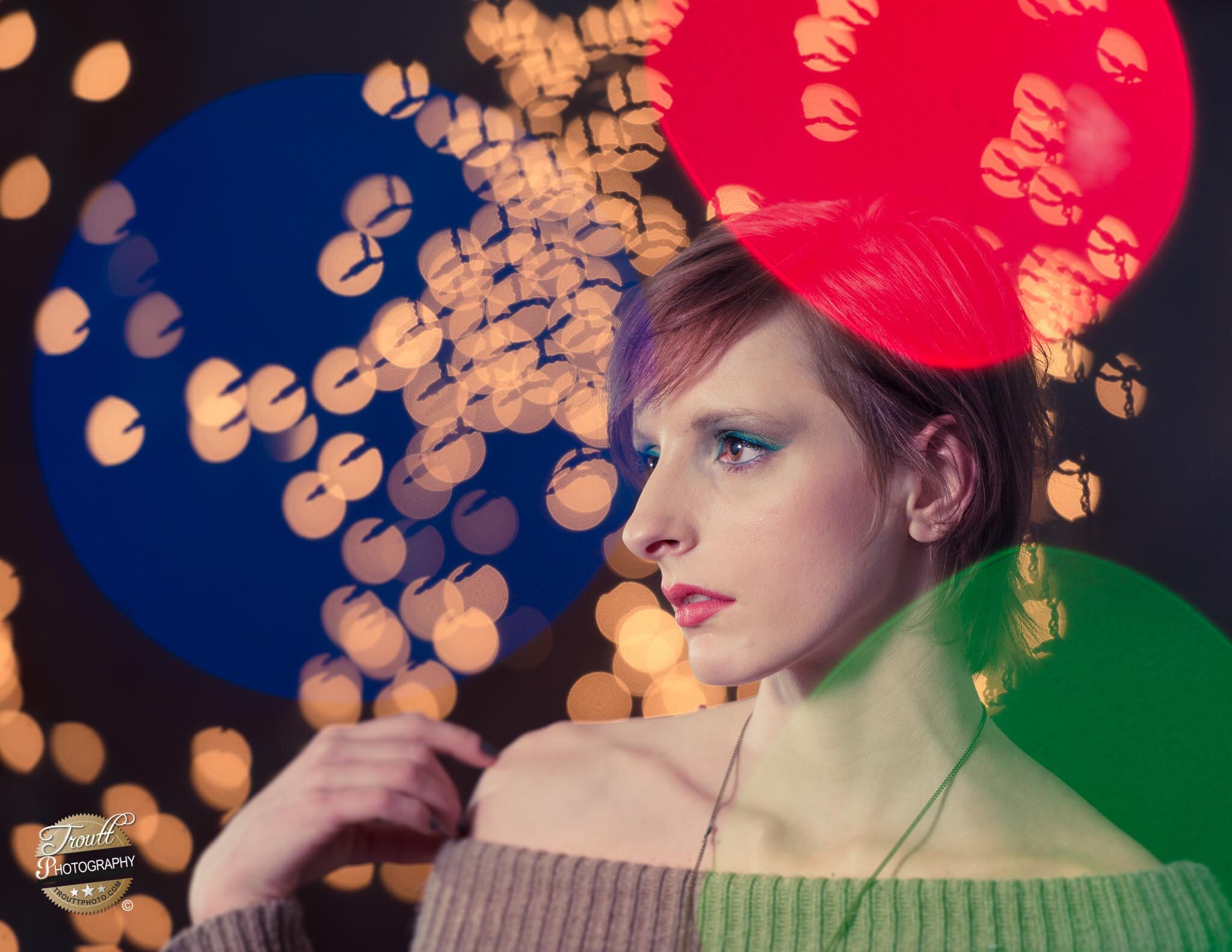Fine Art and Conceptual Photography
Rediscovering the Passion: Beating Photography Burnout
Hey there, fellow photography enthusiasts! Today, I want to share a recent conversation I had with an old friend, a fellow photographer from my Atlanta, GA days. This chat brought to light a topic that many of us have faced at some point in our creative journey: photography burnout.
It all started when my friend reached out with a photo editing question. We delved into the technical aspects, fine-tuning his shot of his daughter. But beneath the surface, something more significant was brewing. My friend confessed that he hadn't picked up his camera for a proper shoot in three whole years! Can you believe that? This revelation struck a chord with me because, like him, I've battled with photography burnout over the past few years.
As we continued our conversation on Facebook Messenger, we began to unpack the reasons behind our creative droughts. One key factor my friend highlighted was the dwindling sense of community in the Atlanta area compared to the vibrant photography scene we used to enjoy. It reminded me of the days when I ran the Metro Area Photographers photography club, bringing together like-minded individuals who shared a passion for the art.
But here's the exciting part—we didn't stop at discussing the problem; we brainstormed some fantastic ideas to reignite that photography spark. So, without further ado, here are five actionable steps to rekindle your photography passion:
1. Local Museum Photography Club: If you're yearning for a supportive photography community, consider checking out your local museum. Many museums host photography clubs or photography-related events. Engaging with fellow enthusiasts in a museum setting can be a wellspring of inspiration.
2. Personal Projects: Start a personal photography project, even if it's something small. For instance, focus on capturing the charm of different burger joints in your town, explore the mesmerizing world of graffiti, or immerse yourself in any other theme that resonates with you. These focused projects can reignite your creative fire.
3. Pinterest Inspiration: Create a Pinterest board dedicated to art that captivates you. Dive into various art forms, from photography to paintings, sculptures, and beyond. Exploring different types of art can open up new avenues of creativity.
4. Photography Challenges: Challenge yourself with mini-assignments or themed photography challenges. Invite your photography friends to participate and share their results. Collaborative projects can be not only fun but also motivating.
5. Online Learning: Explore the wealth of photography knowledge available online. Websites like www.creativelive.com offer a plethora of online classes that can sharpen your skills and introduce you to fresh techniques. Learning something new can be just the spark you need to reignite your passion.
Remember, burnout is a natural part of any creative journey. The key is to take proactive steps and find inspiration in unexpected places. Whether you immerse yourself in your local art scene, embark on personal projects, or delve into online learning, these small actions can make a big difference in rediscovering your passion for photography.
For more photography updates, tips, and inspiration, visit my website www.trouttphoto.com and follow along with the hashtag #trouttphoto. Stay inspired, keep clicking, and capture those beautiful moments!
Unleashing the Power of Generative AI in Conceptual Photography
Hey there, photography enthusiasts! It's Mike Troutt from Troutt Photo, and I've got something exciting to share with you today. Over the past week, I embarked on a photoshoot adventure at the World Chess Hall of Fame in Saint Louis, MO, and I can't wait to spill the beans on how the latest version of Photoshop, V25, with its Generative Fill AI, completely transformed the game for me.
So, here's the scoop: I had the pleasure of working with the talented model Kaila (@kaila_modeling), whom I had met earlier this year at a group shoot event at Studio 858 in Saint Louis. Kaila approached me with the idea of doing a themed shoot inspired by the whimsical world of Alice In Wonderland, and I was instantly intrigued. Now, you might wonder why we chose the World Chess Hall of Fame as our backdrop. Well, let me explain.
The Chess Hall of Fame is not your typical photoshoot location, but it had something special that caught our eye—a massive 20-foot tall Chess Piece and a giant chess set in front of the building. Perfect for creating that surreal Wonderland vibe, right? However, as with any location, there were some challenges.
First off, we were shooting on a bustling sidewalk right next to a busy road, with parked cars lining the street. Not the serene Wonderland setting we had in mind. Additionally, the Hall of Fame building had a huge glass window that made it look more like a store, which wasn't quite the aesthetic we were going for.
This is where the magic of Photoshop's Generative Fill AI came into play. Version 25 of Photoshop introduced this incredible feature that's a game-changer for conceptual photographers like me. Here's how it works: I could simply draw a circle around any part of the photo I wanted to change, then use "Prompts" to tell Photoshop what I wanted to see there. The AI would then generate three different options for me to choose from. If none of them quite hit the mark, I could adjust my prompts or request three more options until I got the perfect result.
In the accompanying photos, I'll show you the before and after shots to give you a visual of the AI's incredible capabilities. It allowed me to add vibrant, colorful flowers where there were none, extend a sidewalk to create the illusion of a larger park, and even magically conceal that distracting glass window to draw more attention to our subject.
My first experience with Generative AI was nothing short of fantastic, and I'm eagerly anticipating how this technology will continue to evolve. Of course, there are some limitations, particularly in terms of resolution, and in a few instances, the AI's handiwork was noticeable. However, this tool is a game-changer that will revolutionize how many of us photographers shape the worlds within our photographs.
In conclusion, the World Chess Hall of Fame provided us with a unique canvas, and with the help of Photoshop's Generative Fill AI, we turned it into our very own Wonderland. I encourage all my fellow photographers to explore the possibilities of this incredible tool and watch as it transforms your creative process. Stay tuned for more adventures in conceptual photography, and don't forget to check out my work on www.trouttphoto.com and follow @trouttphoto for more photography insights and inspiration.
Until next time, Mike Troutt Troutt Photo #trouttphoto #ConceptualPhotography #PhotoshopMagic #AIEnhancement #PhotoshootAdventures #PhotographyInnovation #WonderlandInSaintLouis


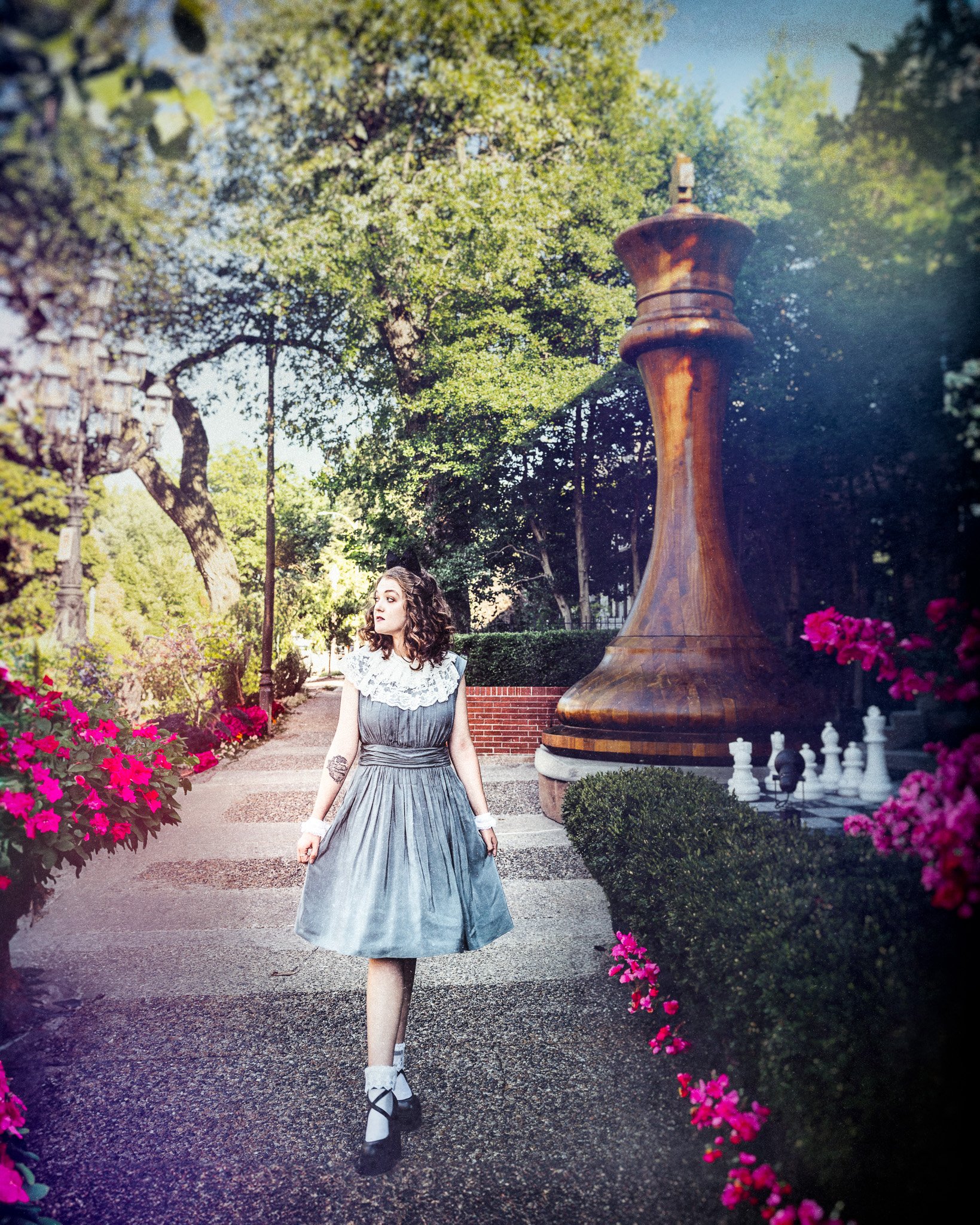
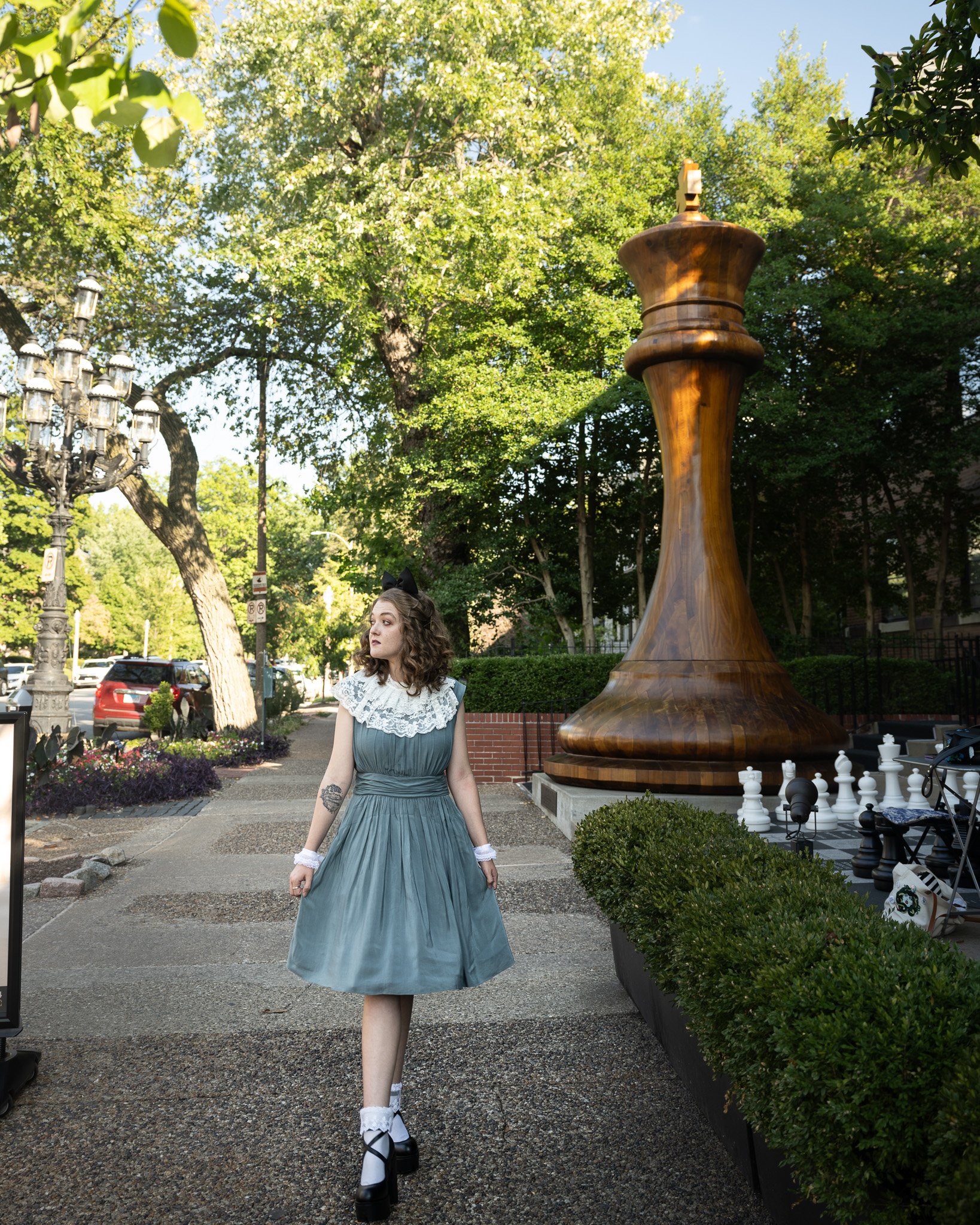
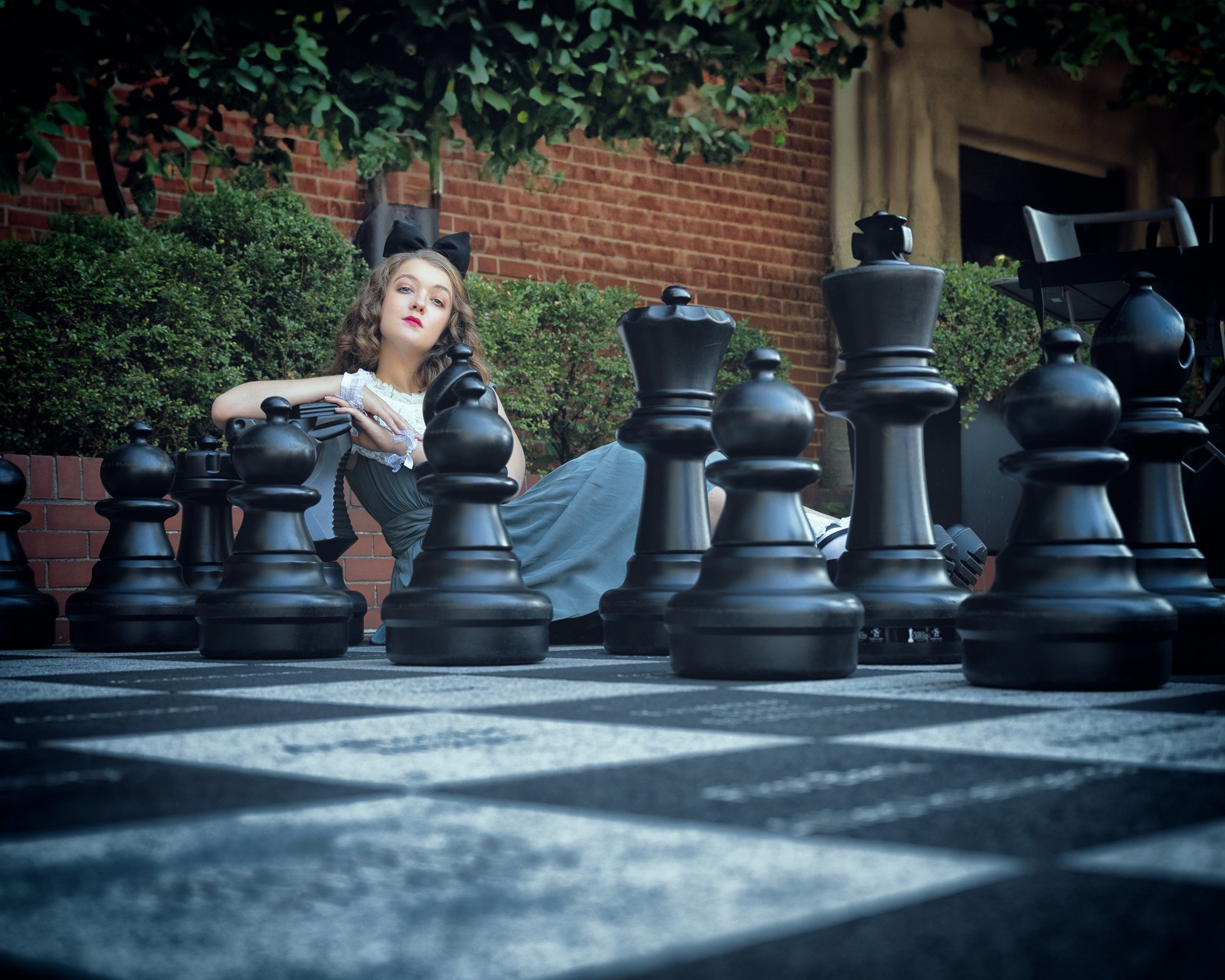

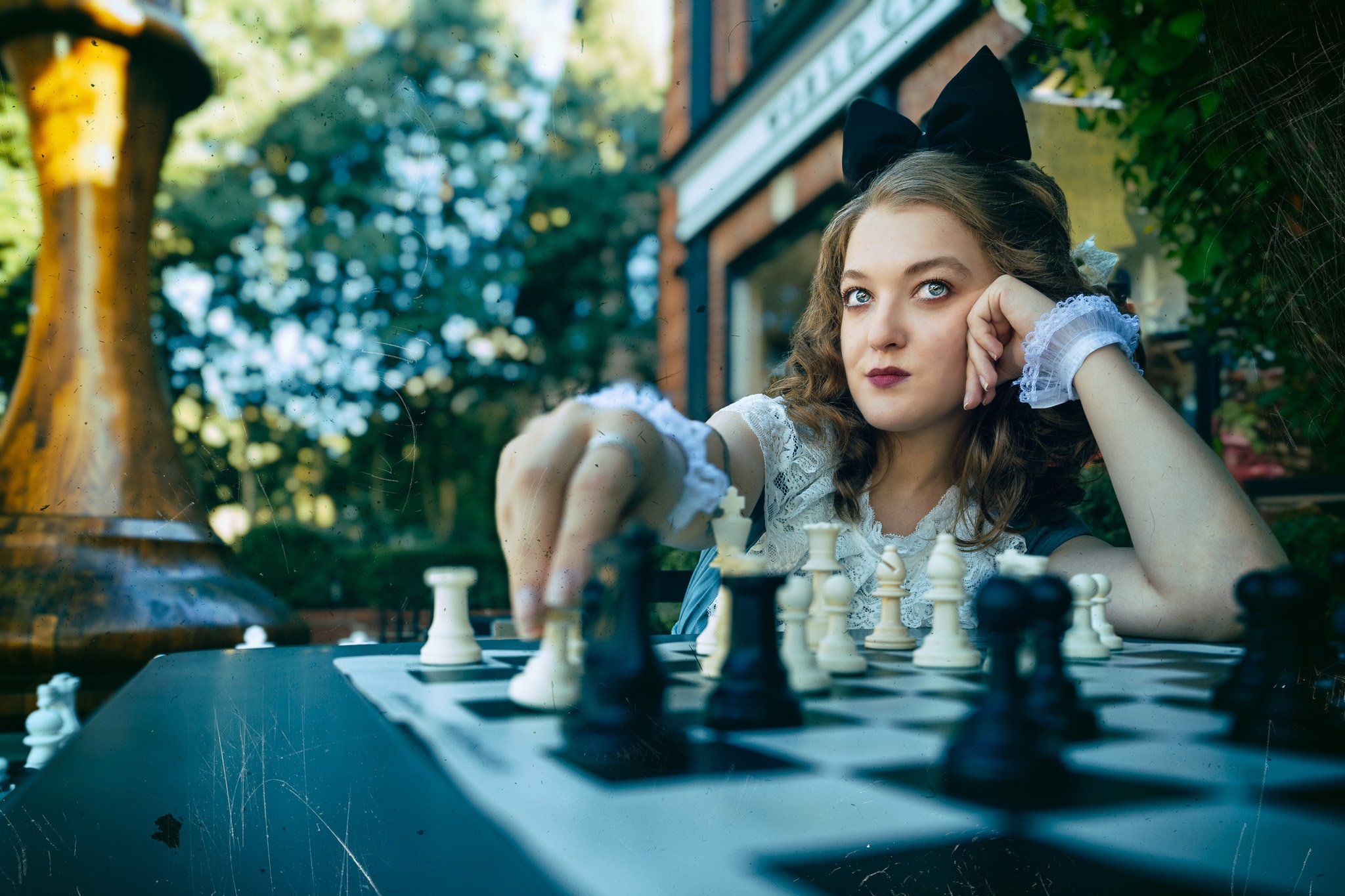

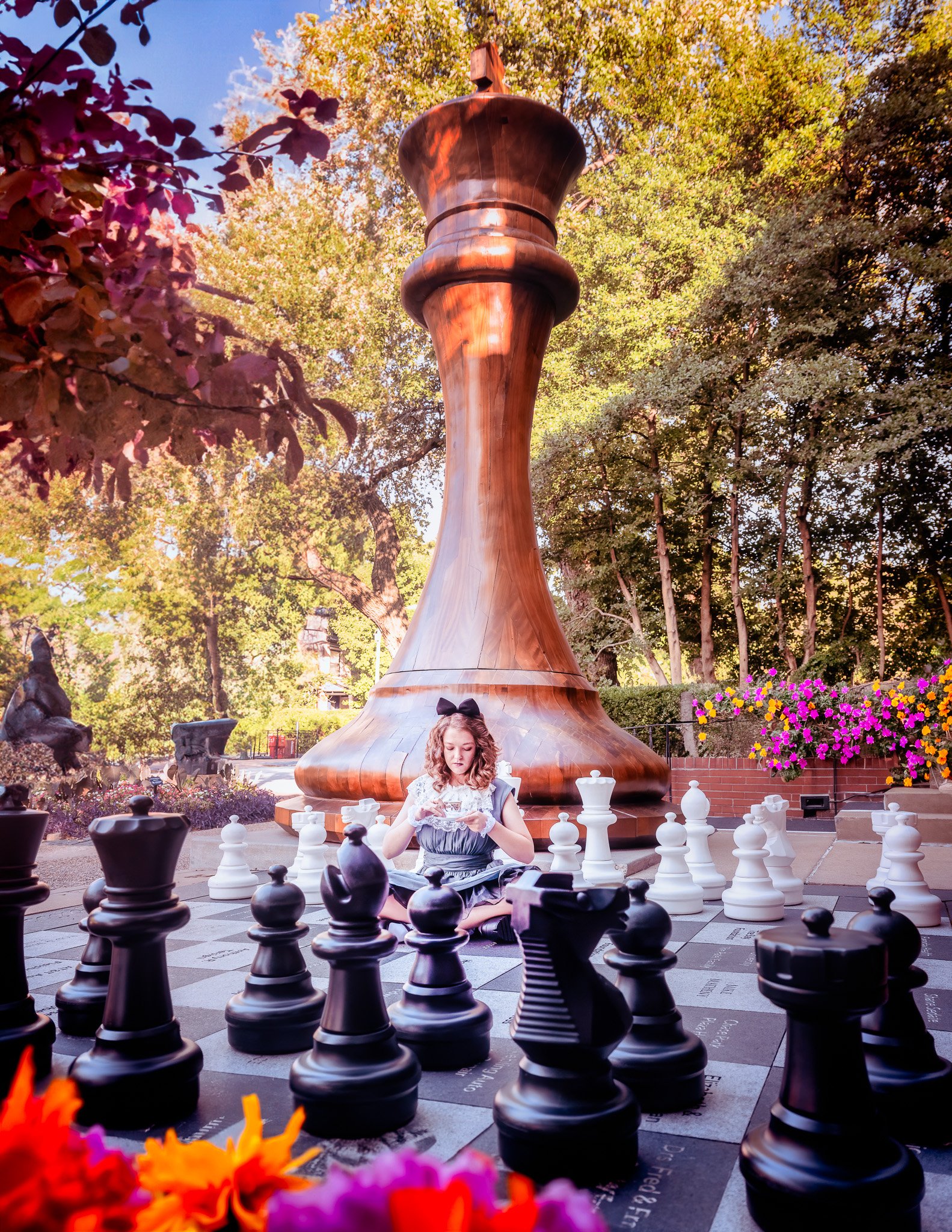
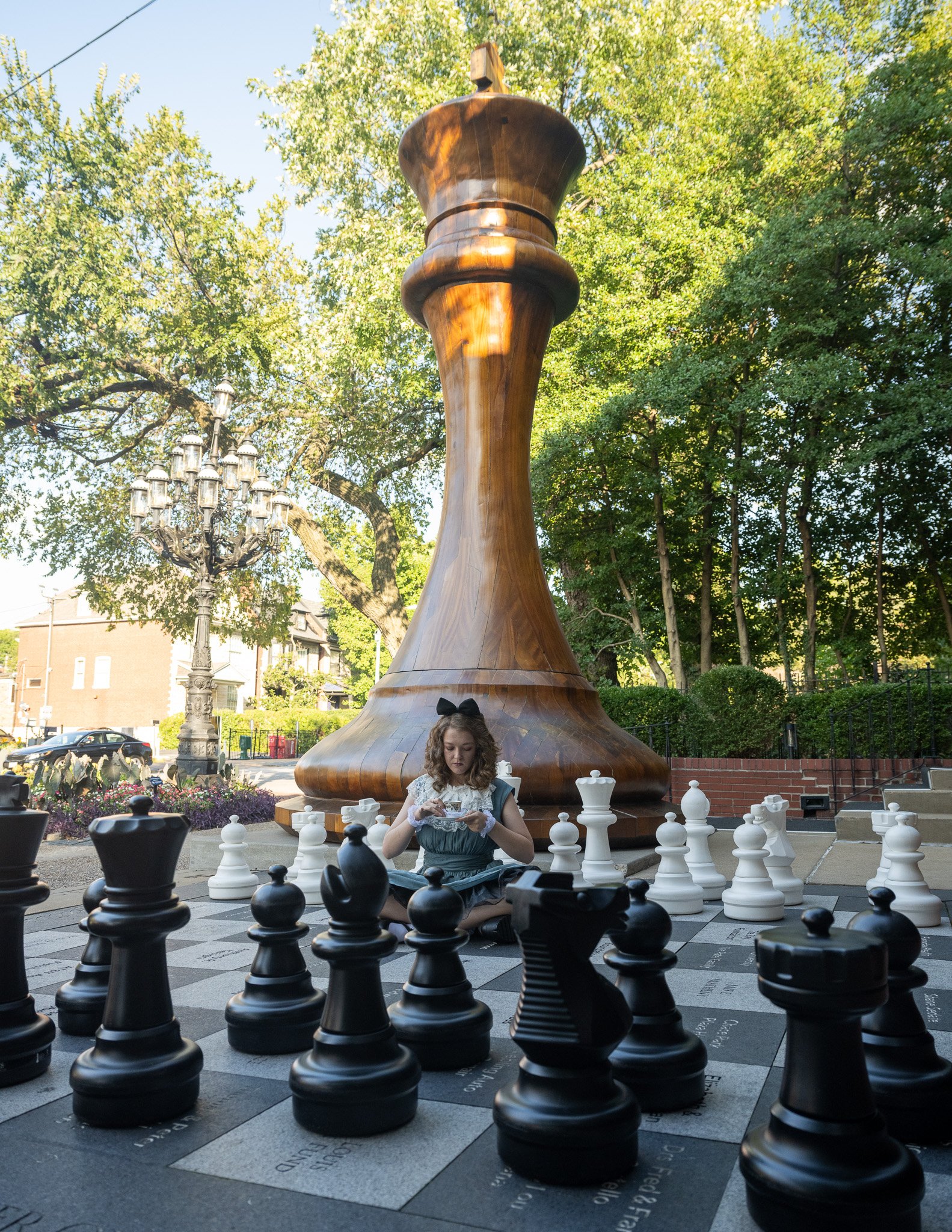
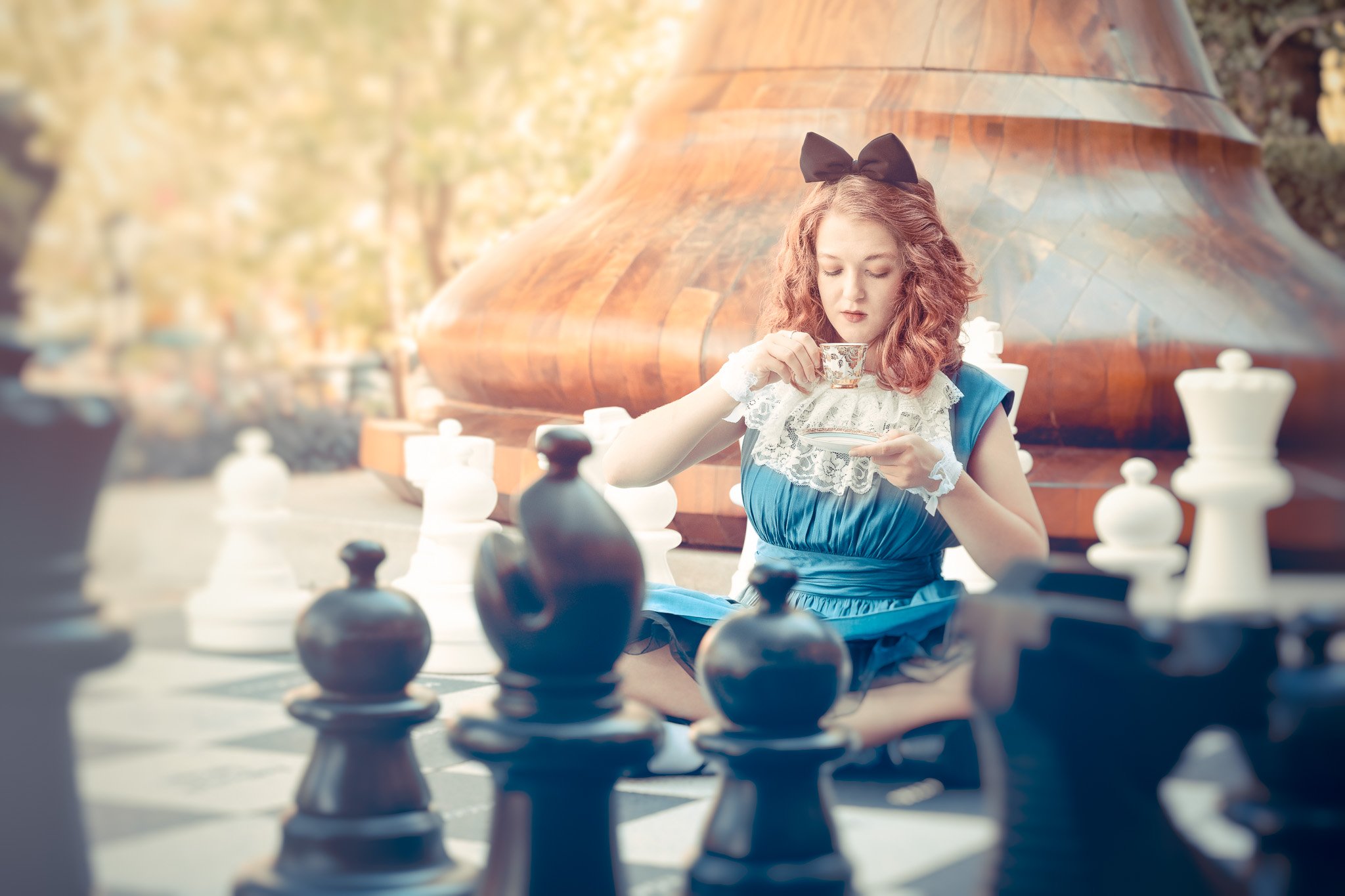
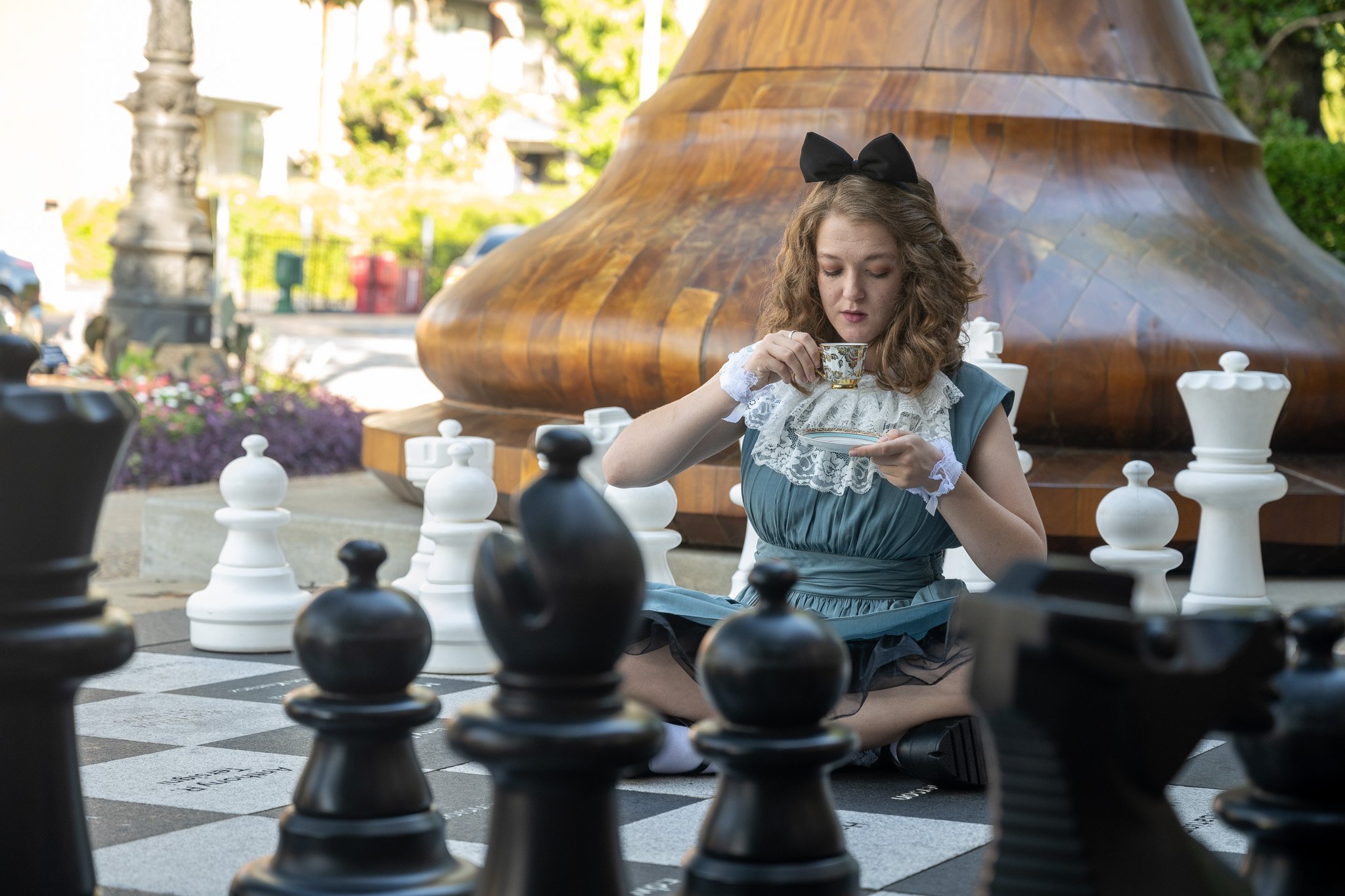
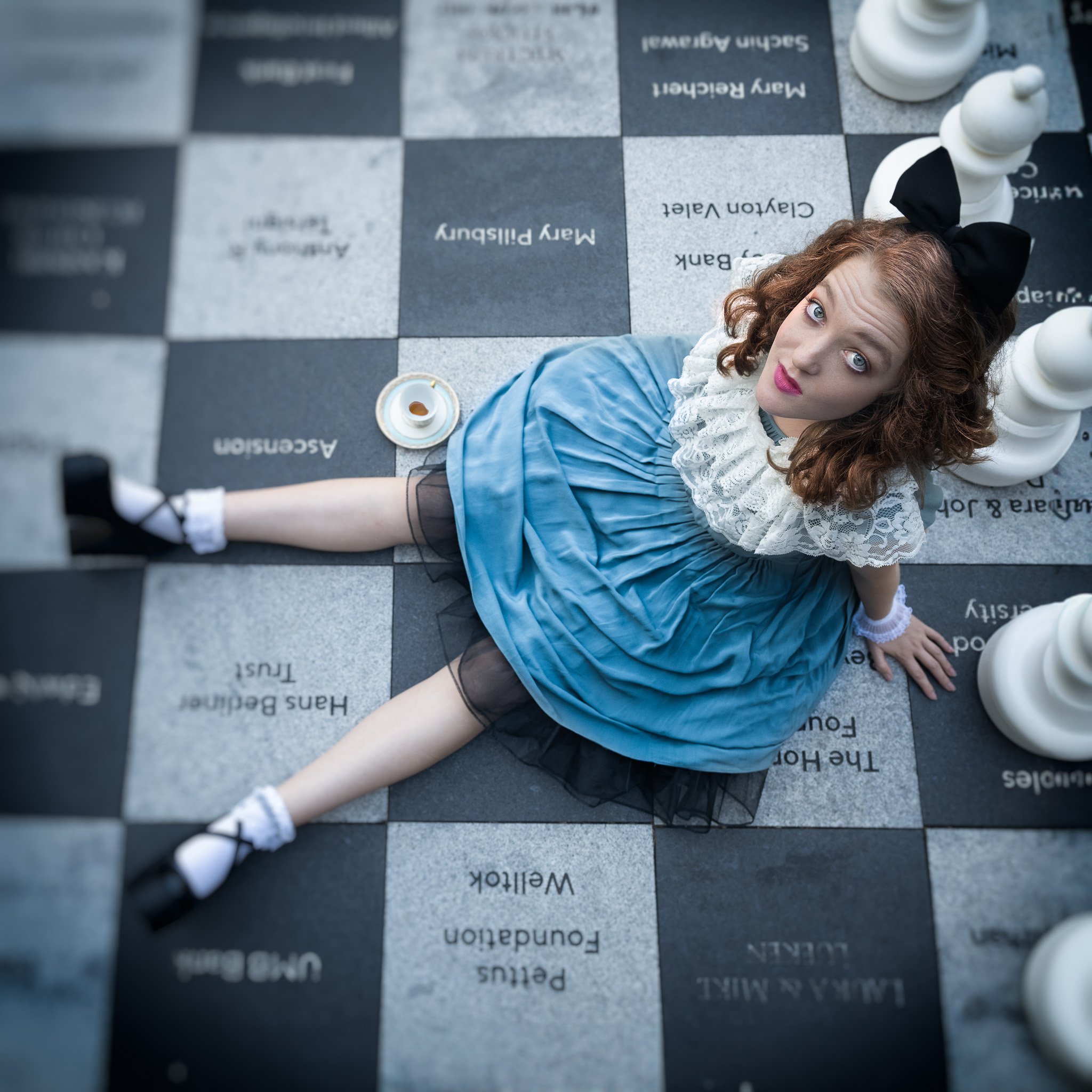

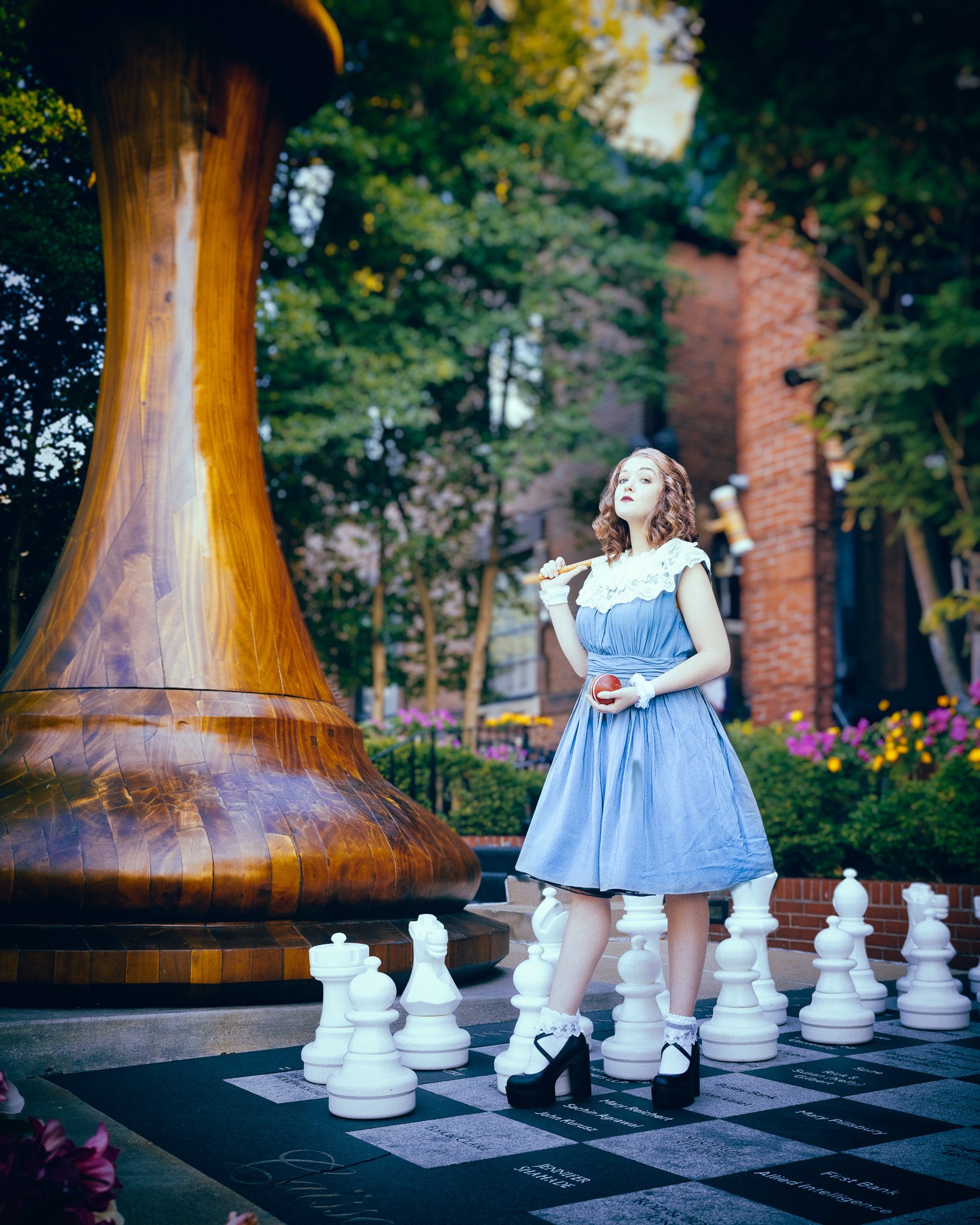
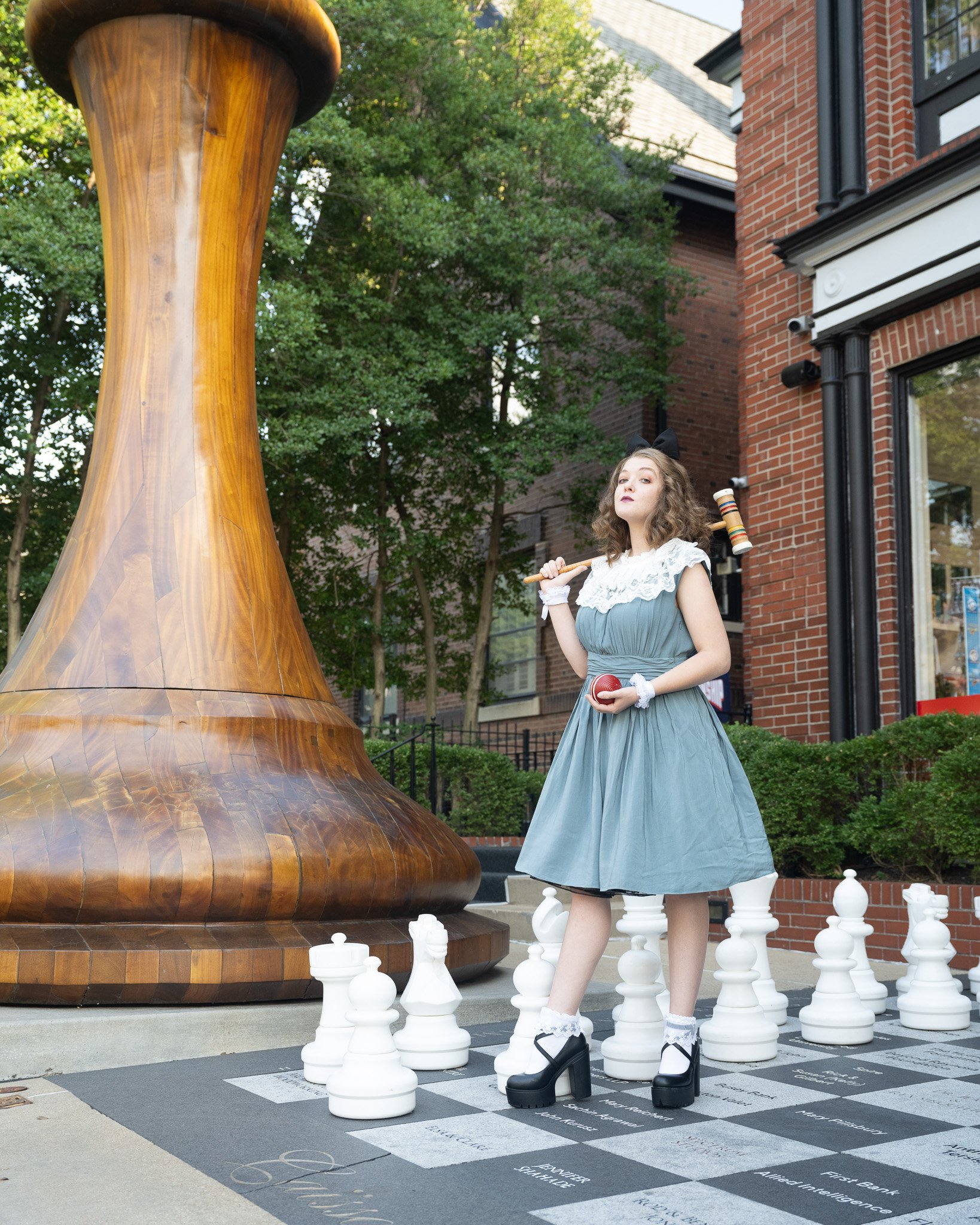
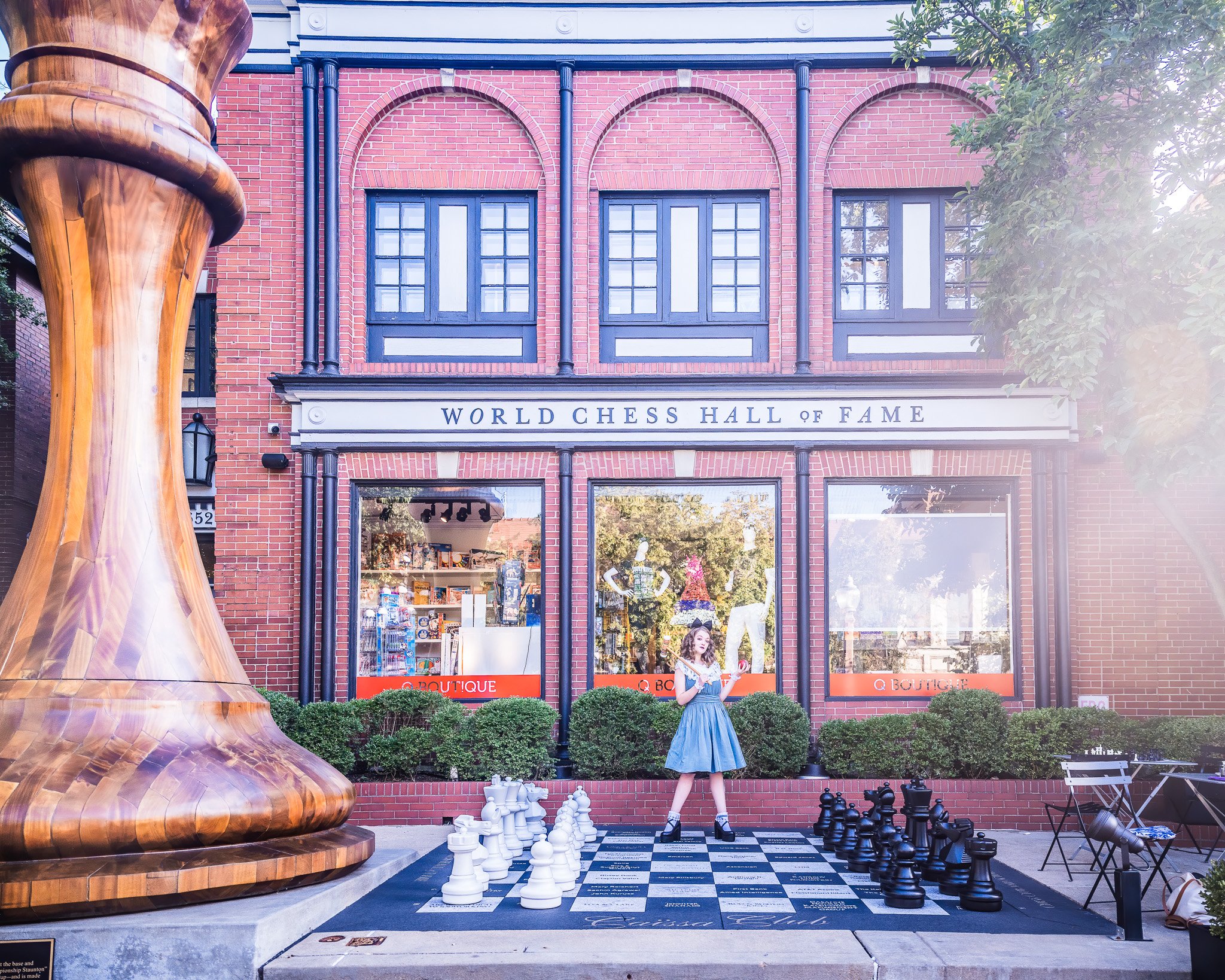
Surrealism in Photography: A Journey into My Inspirations
Hey there, fellow art enthusiasts! It's Mike Troutt from www.trouttphoto.com, and today I want to dive into a topic that has been on my mind lately: Surrealism in photography. This fascinating genre has been my main source of inspiration for the past several years as my style has evolved from portrait photography to conceptual photography. So, let's take a moment to explore the enchanting world of Surrealism through the lens of some of my inspirations, including Scott Mutter, Brooke Shaden, Jerry Uelsmann, and the legendary Salvador Dali.
Scott Mutter: The Master Who Redefined My Perspective
Scott Mutter has been a guiding light in my photographic journey. His profound mastery of photomontage techniques challenged my perception of reality and encouraged me to explore the surreal side of life. Mutter's ability to seamlessly blend the everyday with the extraordinary has been a significant influence as I transitioned from portrait photography to creating conceptual wonders.
Brooke Shaden: The Storyteller Who Unlocked My Imagination
Brooke Shaden's work has been instrumental in shaping my evolution as a photographer. Her surreal compositions are like visual tales waiting to be told. Through her art, I discovered the power of storytelling within the surreal. Shaden's ability to evoke emotions through her imagery inspired me to delve deep into my own imagination and weave narratives into my conceptual works.
Jerry Uelsmann: The Darkroom Wizard Who Broadened My Horizons
Jerry Uelsmann's darkroom wizardry opened my eyes to the limitless possibilities of traditional photography techniques in the realm of Surrealism. Long before the digital age, Uelsmann was creating surreal wonders by layering multiple negatives in the darkroom. His dedication to the craft showed me that creativity knows no bounds and encouraged me to explore uncharted territories in my work.
Salvador Dali: The Surrealist Icon Who Fueled My Dreams
Salvador Dali, the iconic Surrealist painter, left an indelible mark on my journey into Surrealist photography. His eccentric and dreamlike paintings often found their way into my photographic interpretations. Dali's ability to evoke a sense of the uncanny and the surreal has fueled my dreams of pushing the boundaries of visual art and storytelling through photography.
Embracing Surrealism in My Own Work
As a conceptual fine art photographer, Surrealism has become the heart and soul of my artistic expression. The influence of these remarkable artists has guided me in pushing the boundaries of what I perceive as reality, capturing the essence of dreams and imagination, and inviting viewers to embark on a visual odyssey.
Incorporating elements of Surrealism into my work has allowed me to create art that challenges, inspires, and transports us to the extraordinary. It's about blending multiple images, distorting perspectives, and juxtaposing contrasting elements to tell unique stories through photography.
#trouttphoto #Surrealism #PhotographyArt #ScottMutter #BrookeShaden #JerryUelsmann #SalvadorDali #Dreamscape #Imagination #VisualArt
In Conclusion
Surrealism in photography has not only been a captivating journey into the realms of the subconscious but also a transformative path in my artistic evolution. Scott Mutter, Brooke Shaden, Jerry Uelsmann, and Salvador Dali have been my guiding stars, inspiring me to transition from portrait photography to the enchanting world of conceptual photography.
As I continue to explore Surrealism in photography, I invite you all to join me on this incredible journey. Let's unlock the doors to our imagination and create art that challenges, inspires, and transports us to the extraordinary.
Stay surreal, my friends!
Mike Troutt www.trouttphoto.com #trouttphoto #SurrealismInPhotography #ArtisticJourney #Dreamscape #ImaginationUnleashed #PhotographyMagic #CreativeExploration
Embracing Creativity: My Year-Long One Lens Challenge
Hey there, fellow photography enthusiasts! Mike Troutt here, your friendly neighborhood photographer. Today, as I was looking for an older photo that a model I shot several years ago had requested of me, I realized all the photos from that time period were part of my "One Lens Challenge."
For an almost an entire year, I embarked on a creative experiment that changed the way I looked at photography. I decided to shoot exclusively with my trusty 85mm 1.8f lens. Let me take you on this inspiring ride and explain how I learned to move around to capture the perfect shot.
The Challenge Begins
It all started with a desire to push my creative boundaries. As an artist, I firmly believe that limitations can often fuel innovation. So, I stashed away my array of lenses and committed to the 85mm. At first, it felt restrictive, but soon I discovered its incredible potential.
A Different Perspective
One of the key lessons I learned during this challenge was the power of perspective. With an 85mm lens, you can't zoom in or out; you must physically move to frame your shot. This forced me to become more intentional in my compositions. I had to explore different angles, get closer to my subjects, or step back to capture a broader view.
The Magic of Bokeh
The 85mm 1.8f lens is renowned for its ability to produce beautiful bokeh – that dreamy, out-of-focus background that makes your subject pop. It became my secret weapon, allowing me to isolate subjects and create mesmerizing portraits that stood out in my portfolio.
Storytelling with a Single Focal Length
As an artist, storytelling is at the core of my work. During this challenge, I realized that a single focal length can be a powerful tool for storytelling. By moving closer or farther from my subjects, I could emphasize certain elements, evoke emotions, and weave intricate narratives within my frames.
Adapting to Challenges
Of course, there were challenges along the way. There were moments when I wished for a wider or more versatile lens. However, these challenges pushed me to be more creative in problem-solving. I had to find ways to work with what I had, and it resulted in some of my most innovative shots.
The Journey Continues
As I reflect on this year-long journey, I can't help but be grateful for the lessons it taught me. The One Lens Challenge forced me out of my comfort zone, encouraged me to explore new angles, and helped me hone my skills as a photographer.
If you're looking to reignite your creative spark, I highly recommend taking on a similar challenge. Whether it's an 85mm lens or any other focal length, you'll be amazed at the artistic growth that can come from embracing limitations.
So, there you have it, my friends – my musings on the One Lens Challenge. Remember to visit my website, www.trouttphoto.com, for more photography insights, and feel free to explore the incredible journey through my lens by searching for #trouttphoto.
Keep shooting, keep exploring, and keep pushing your creative boundaries.
Cheers, Mike Troutt #trouttphoto #PhotographyChallenge #CreativeJourney #OneLensChallenge #85mmMagic #PhotographyInsights #ArtisticGrowth #StorytellingThroughLenses #LimitationsInnovation
Celebrating Imperfections in Portrait Photography: Capturing the Essence of Uniqueness
In a world where digital perfection often takes center stage, there's a growing movement within photography that celebrates the beauty of imperfection. Rather than airbrushing every blemish and wrinkle, photographers are now turning their lenses towards embracing the distinctive qualities that imperfections bring to their subjects. Join me as we explore the art of celebrating flaws in portrait photography and discover how it can lead to emotionally resonant and captivating images.
The Human Element: Why Imperfections Matter
Portrait photography is a captivating journey into the essence of a person, and it's the imperfections that make us uniquely human. Those lines etched by time, the scars that narrate tales of resilience, and the quirks that define personality are the elements that add depth and character to a portrait. Let's delve into a few examples to illustrate this concept:
1. Wrinkles: A Chronicle of Life's Journey
Wrinkles, often seen as signs of aging, are also a visual testimony to a life well-lived. They tell a story of wisdom, resilience, and experience. A portrait that embraces wrinkles doesn't shy away from the passage of time; instead, it celebrates it. The interplay of light and shadow on those lines can create a mesmerizing texture that adds depth and character to the photograph.
2. Scars: Symbols of Strength and Healing
Scars are reminders of battles fought and obstacles conquered. Instead of erasing them from the canvas, photographers now use creative lighting and composition to accentuate scars. This approach not only pays tribute to the subject's strength but also infuses the portrait with a unique and powerful narrative.
3. Freckles: Nature's Own Beauty Marks
Freckles, once viewed as imperfections by conventional beauty standards, are now cherished for their distinctiveness. They can infuse a portrait with a charming and playful quality, enhancing the subject's individuality. Photographers often employ close-up shots to capture the intricate patterns of freckles, turning them into mesmerizing features.
4. Gaps and Crooked Teeth: Unconventional Beauty
A gap between front teeth or slightly crooked teeth can be defining characteristics of a person's smile. These 'flaws' can make a smile endearing and unique. Portrait photographers are adept at capturing these quirks, revealing the genuine warmth and personality of the subject.
5. Unfiltered Emotion: Capturing the Raw Moments
Imperfections in portraits extend beyond physical features; they can also be found in the unfiltered emotions and expressions of the subject. A tear, a smirk, or a contemplative gaze can add depth and authenticity to a portrait. Photographers strive to capture these fleeting, imperfect moments that unveil the true essence of the subject.
The Photographer's Perspective
For photographers, embracing imperfections in portrait photography is a mindset shift. It's about recognizing beauty in the unconventional, discovering the extraordinary within the ordinary, and capturing a person's essence, scars, wrinkles, and all.
One effective approach is to establish a close rapport with your subject, fostering an environment where they feel comfortable and confident in their own skin. Encourage them to be authentic, to let their imperfections shine through. Utilize lighting and composition techniques to highlight the unique features that define them.
Conclusion: Imperfections Tell a Story
In portrait photography, the beauty of imperfection lies in the narratives it weaves. It's about celebrating the individuality of each subject, capturing their essence, and crafting images that resonate with authenticity. As photographers, let us wholeheartedly embrace these flaws, for they are what render our subjects beautifully, unapologetically human.
Stay tuned for more insights into the fascinating world of photography on my website, www.trouttphoto.com. Don't forget to share your thoughts using #trouttphoto and explore the captivating world of imperfections in art and photography. #PortraitPhotography #Imperfections #EmbracingFlaws #PhotographyJourney #Authenticity #UnconventionalBeauty #PhotographyNarratives #HumanEssence
Striking the Balance: Quality vs. Quantity in Delivering Photos to Models After a Shoot
Hey there, fellow photography enthusiasts! Lately, I've been pondering an age-old dilemma, the balance between delivering a curated collection of high-quality images and a plethora of shots that capture every angle and emotion. It's like choosing between sipping on your favorite espresso or embracing the caffeinated whirlwind of a full-blown coffee binge. So, let's dive into the pros and cons of delivering quality vs. quantity of photos to models after a shoot.
**Quality: Capturing the Essence**
There's something truly magical about crafting a handful of meticulously curated images that encapsulate the essence of a shoot. As artists, we understand that each photograph is a piece of our soul woven into visual poetry. Focusing on quality allows us to deliver a select few masterpieces that showcase the model's unique beauty, the essence of the concept, and the skillful execution of our craft.
Delving into quality has its perks. It allows us to:
1. **Tell a Story:** Fewer images mean more space to tell a compelling narrative. Each frame becomes a chapter in the story we're weaving through visuals.
2. **Aesthetic Consistency:** A smaller selection of images makes it easier to maintain a consistent mood, tone, and style throughout the collection, creating a cohesive visual experience.
3. **Time Investment:** By devoting ample time to post-processing and refining each image, we ensure that every photo is a work of art in its own right.
However, there's another side to this creative coin: quantity.
**Quantity: Unveiling the Spectrum**
A hearty dose of photos can offer a diverse spectrum of emotions, poses, and angles. It's like a musical jam session where every note resonates differently. Embracing quantity has its own set of advantages:
1. **Variety:** With more shots to choose from, models can explore a wide range of expressions and poses, giving them a versatile portfolio to showcase their skills.
2. **Moments Captured:** Quantity captures fleeting moments that might otherwise be lost. Those candid, unscripted moments often hold an unparalleled charm.
3. **Collaboration:** Offering a broader selection of images gives models a chance to participate in the curation process, allowing them to choose the shots that resonate most with their vision.
However, here's where we reach the crossroads. Too many photos can be overwhelming, diluting the impact of the collection. Our responsibility as artists is to guide our audience through a visual journey, not leave them lost in a sea of images.
**Striking the Perfect Chord**
So, how do we harmonize these two artistic approaches? It's all about balance. Aim for a collection that marries the power of quality with the depth of quantity. Consider these steps:
1. **Curate Thoughtfully:** Handpick a selection of images that best represent the concept and the model's unique presence. Focus on those that convey a range of emotions and perspectives.
2. **Collaborate:** Engage with your models. Let them be a part of the selection process. Their insights can be invaluable in capturing their true essence.
3. **Narrative Flow:** Arrange your images in a sequence that tells a story. Lead your audience through a visual narrative that leaves a lasting impression.
As photographers, we have the incredible privilege of freezing moments in time, crafting emotions and stories within our frames. So, whether you lean towards a collection of masterpieces or a diverse gallery of moments, remember that every click of the shutter adds to the visual legacy you're building.
Until next time, keep capturing the magic, my friends!
Cheers,
Mike Troutt
#trouttphoto #PhotographyMusings #ArtisticBalance #VisualNarratives #CaptureTheMoments #EssenceInFrames #ArtistryUnleashed
Unmasking 15 Photography Myths: My Take on What Really Clicks
Hey there, fellow photography enthusiasts! You know, we all start somewhere in this captivating world of photography. Along the way, we hear all sorts of claims and "truths" that often shape our perspective. Today, let's peel back the layers and get real about some of these myths that might be holding us back. So, grab your camera – let's dive in and demystify!
Myth #1: Expensive Gear Means Better Photos
Sure, it's tempting to think that a pricier camera equates to mind-blowing shots. But hold up! While high-end gear certainly has its advantages, it’s not the sole ingredient in the photography recipe. Trust me, your creative flair and how you envision your shot matter far more than the price tag. A skilled photographer can create breathtaking images with an entry-level camera, while a top-notch camera in the hands of an inexperienced person won’t automatically yield masterpiece shots.
Myth #2: The 'Auto' Mode is for Newbies
Let’s talk about that “Auto” mode stigma. Some may say it’s a red badge of amateurism. But you know what? It’s like having a co-pilot that knows all the shortcuts. There's no shame in letting your camera assist you, especially in challenging lighting situations. Think of it as a reliable friend who’s got your back when you're still working on your exposure triangle dance.
Myth #3: More Megapixels = Better Photos
Megapixels – the yardstick many use to measure photo quality. But here’s the scoop: it’s not all about the megapixels. Picture quality is a complex equation involving sensor size, lens quality, lighting conditions, and yes, megapixels. But obsessing over megapixels alone is like focusing on the sprinkles without considering the cake. High megapixels are awesome for large prints or cropping without losing details, but a well-composed shot with lower megapixels can still create a stunning impact.
Myth #4: Editing is Like Cheating
Let’s address this elephant in the room: photo editing. Some purists might argue that editing is akin to cheating. But come on, think of it more like adding the final strokes to a canvas. Just as a painter enhances their artwork with finishing touches, we photographers bring our creative vision to life in the digital darkroom. It’s not about manipulation; it’s about enhancing the emotions and stories that we aim to convey through our photos.
Myth #5: Zooming Replaces Getting Closer
Zoom lenses are undeniably handy, but they can't replicate the energy of being right there, immersed in the moment. Getting physically closer to your subject can create intimacy, reveal intricate details, and help you forge a deeper connection with your scene. It's not just about framing; it's about infusing your presence into the shot.
Myth #6: Natural Light Trumps Artificial Light
The eternal battle between natural and artificial light – there's no clear victor here. Natural light, with its soft hues, has its charm, but artificial light brings versatility and control to the table. It's like choosing between a cozy candlelit dinner and a vibrant city nightlife – both have their unique appeal.
Myth #7: Photography Breaks the Bank
Money and photography – an ongoing tango. It's easy to believe that photography is a pricey hobby, but here’s the kicker: it doesn’t have to be. Thanks to a wide range of cameras and accessories available today, you can dip your toes into this world without emptying your pockets. The key is to prioritize your passion and creativity over the price tag.
Myth #8: RAW is the Only Way to Go
RAW vs. JPEG – the eternal dilemma. Yes, RAW files offer you unparalleled flexibility in post-processing, but don't overlook the power of a well-crafted JPEG. RAW might be your raw material, but JPEG is your polished masterpiece. Each has its place in the photography toolkit, and understanding when to use which is essential for efficient workflow and desired outcomes.
Myth #9: The Rule of Thirds is Law
Ah, the rule of thirds – that old composition guideline. It’s valuable, no doubt, but it’s not etched in stone. The rule of thirds helps achieve balanced compositions, but don’t let it limit your creativity. Sometimes, breaking free from this grid can lead to captivating and unexpected results.
Myth #10: Blurry Photos are a No-No
Blur in photos isn’t always a bad thing. Of course, sharp focus is often desired, but intentionally introducing blur can add a sense of motion, depth, and emotion to your shots. It’s like capturing the energy of a moment, frozen in a beautiful, dreamy haze.
Myth #11: Photography is a One-Man Show
Photography isn’t a solo journey – it’s a collaborative art form. Working with models, fellow photographers, and other artists can ignite fresh ideas and open doors to new creative dimensions. It's like cooking a gourmet meal together, each contributing a unique flavor to the final dish.
Myth #12: You Need a Dreamy Location
The notion that you need jaw-dropping landscapes to capture amazing shots is a bit overrated. Sure, stunning locations can be magical, but don’t underestimate the beauty in the everyday. Your lens has the power to transform the mundane into the extraordinary through creative angles, unique perspectives, and clever framing.
Myth #13: Tech Skills Trump Creativity
Technical prowess is undoubtedly important, but it shouldn’t overshadow your creative spirit. Photography isn’t just about nailing the exposure or mastering complex editing techniques; it’s about expressing your unique perspective and emotions through images.
Myth #14: There's Only One Right Way
Photography isn’t a one-size-fits-all domain. It's an artistic realm where your personal style and vision shine. So, toss that rulebook out the window occasionally. Embrace experimentation, challenge conventions, and discover the beauty of your unique approach.
Myth #15: Anyone Can Nail Photography
Ah, the belief that photography is a breeze. While modern cameras have certainly made photography more accessible, mastering this craft requires dedication and a hunger for continuous learning. It’s not just about clicking buttons; it’s about refining your skills, developing your eye, and discovering your artistic voice.
So, my fellow photo enthusiasts, let's peel back the layers of these myths and discover the heart of photography. Remember, it’s not about conforming to rigid beliefs; it’s about embracing the journey of growth and self-expression through your lens. Until our next snapshot adventure, keep capturing the moments that resonate with your soul. Happy clicking, everyone!
Who Are You Photographing For? Finding Creative Voice Through Photography
Hey there, fellow shutter clicker’s enthusiasts! It's great to have you join me today for a conversation that's been swirling in my mind lately. You know, in the world of photography, there's often this tug-of-war between shooting for clients, chasing social media validation, and staying true to our personal creative vision. I'm sure many of you can relate to this struggle. So, let's dive into this introspective journey and explore the pros and cons of each approach.
Shooting for Clients: A Balancing Act
When I first started on this photographic journey, my main focus was on shooting for clients. The opportunity to capture someone else's story and bring their vision to life was undeniably fulfilling. There's a certain gratification that comes from knowing your work has contributed to someone else's happiness or success. The financial rewards are definitely a plus too!
However, the challenge lies in balancing your creative input with the client's expectations. Sometimes, you might find yourself compromising your artistic expression to align with their preferences. It's a delicate dance of meeting their needs while infusing your unique perspective.
Chasing Social Media Likes: The Double-Edged Sword
In this age of instant gratification and endless scrolling, the quest for social media likes can be a powerful driving force. Sharing our work with the world and receiving positive feedback feels incredible. The validation from a growing number of likes and followers can give a real boost to our self-esteem and confidence.
Yet, it's crucial to remember that the value of our art isn't solely determined by the number of likes or comments we receive. The danger lies in becoming so focused on trends and popular styles that we lose sight of our originality. We risk sacrificing our authentic voice in the pursuit of fleeting internet fame.
Shooting for Myself: A Journey of Self-Expression
So, where does that leave us? Well, personally, I've discovered that the most fulfilling approach for me is shooting for myself. It's about tapping into my creative wellspring and giving life to the images that reside within my mind. This isn't just about pressing the shutter; it's about crafting a narrative, evoking emotions, and creating art that's a true reflection of who I am.
Sure, it might not always lead to immediate recognition or financial gain, but it's about nurturing my growth as an artist and honing my distinct style. I'm no longer confined by the expectations of clients or the fleeting praise of social media. Instead, I'm guided by my inner compass, pushing the boundaries of my creativity and exploring uncharted territories.
Embracing My Creative Artistic Outlet
In conclusion, my friends, photography is a journey that evolves over time. It's about finding that sweet spot where our passions intersect with our purpose. For me, that means capturing the world through my eyes, creating images that resonate with my soul, and staying true to my creative vision. It's an ongoing process of self-discovery and artistic expression.
Remember, it's not about who you're photographing for, but about finding your unique voice and sharing it with the world. Whether you're shooting for clients, chasing social media likes, or embarking on a personal artistic journey, let your heart and imagination be your guides. So, keep clicking, keep creating, and keep embracing the beautiful journey that is photography.
Clearing your mind to help your Creativity.
Hey there, fellow seekers of inspiration! How about we grab our morning brew and have a chat about something close to our hearts: boosting creativity? Imagine me with my trusty mug, sharing some personal tricks I've picked up to clear the mental fog and get those creative gears turning. So, here's a rundown of my top five tried-and-true methods:
1. Morning Mindfulness: Wake Up and Breathe Let's kickstart the day on the right note. Before the world kicks into high gear, I take a moment to breathe deeply, feeling the air fill my lungs and then release. It's like giving my brain a gentle nudge and saying, "Hey, let's get those creative juices flowing."
2. Nature's Embrace: Take a Walk Outside Nature is the ultimate reset button, at least for me. I throw on my sneakers and step outside, where everything feels refreshingly uncomplicated. The rustling leaves, the chirping birds – it's like my personal creativity oasis. Stepping away from screens and embracing the outdoors is like a spa day for my thoughts.
3. Brain Dump: Write It All Down Alright, confession time. I'm a serial note-taker. When my mind is a whirlwind of ideas, I grab my trusty notebook and let it all spill out. It's like decluttering my mental space and making room for new, exciting concepts to take root.
4. Groove Therapy: Listen to Some Music Ah, music – my soul's confidant. When things feel overwhelming, I cue up my favorite tracks and just let go. The rhythm takes over, the world fades into the background, and suddenly I'm in my own creative bubble. It's not about being a dance prodigy; it's about liberating your mind through melodies.
5. Curiosity Unleashed: Learn Something New Okay, here's the scoop – curiosity is my secret weapon. I dive into unfamiliar hobbies, obscure books, and quirky documentaries like they're hidden treasures. It's like opening a portal to a whole new dimension. Trust me, delving into the unknown can spark creative fireworks you never saw coming.
So, my friends, these are the moves that work wonders for clearing my mind and inviting creativity to take center stage. Remember, these aren't hard-and-fast rules; they're gems you can adapt to your liking. Whether you're taking those mindful breaths, losing yourself in music, jotting down thoughts, exploring new horizons, or embracing the great outdoors, the key is finding what clicks for you. So, here's to clear minds, boundless creativity, and a journey that's endlessly rewarding. Here's to becoming the Picasso of our own stories!
"Creating Stunning Conceptual Photos: A 5-Step Guide"
Hey there, photography enthusiasts! If you're looking to dive into the world of conceptual photoshoots, you've come to the right place. Conceptual photography is all about turning your creative ideas into captivating visual stories, and I'm here to guide you through five essential steps to prepare for a successful and expressive photoshoot.
Step 1: Crafting Your Concept
It all begins with an idea. Start by brainstorming and crafting a unique concept or theme for your photoshoot. Whether it's a burst of emotions, a narrative, or a metaphorical representation, your concept sets the tone for your entire shoot. Dive into art, literature, and even your own imagination for inspiration. Remember, your concept should harmonize with your personal style and artistic vision.
Step 2: Mapping Out the Shoot
Once you've got your concept locked in, it's time to plan out the shoot. Grab a notebook or your favorite planning tool and create a detailed storyboard or shot list. Visualize each shot – the angles, poses, and compositions – and how they'll contribute to your overarching theme. Sketch out rough drawings or use reference images to flesh out your ideas. This roadmap will be your trusty companion on shoot day.
Step 3: Finding the Perfect Location
Choosing the right location can make or break your conceptual photoshoot. Scout for spots that seamlessly blend with your concept. Be it an indoor setup or an outdoor adventure, your chosen location should amplify the emotions and messages you're aiming to convey. Hunt for captivating backgrounds, unique textures, and lighting that aligns with your vision. Safety and accessibility are key factors too, so keep those in mind.
Step 4: Styling and Props
Now it's time to get into the nitty-gritty details. Collect the props, wardrobe pieces, and accessories that'll bring your concept to life. Pay close attention to colors, textures, and styles that sync up with your theme. Remember, props can be potent storytelling tools, so choose them wisely. If necessary, collaborate with makeup artists, stylists, and designers to ensure everything aligns perfectly.
Step 5: Collaborate and Communicate
Photography is a collaborative art, so it's crucial to establish effective communication with your team. Clearly articulate your concept, vision, and expectations to everyone involved, including models and assistants. Keep the lines of communication open, and be open to creative inputs from your team members. After all, their insights can often lead to brilliant and unexpected results.
Remember, conceptual photoshoots are your chance to transform thoughts and emotions into tangible images. Stay adaptable during the shoot, as sometimes the most magical moments happen when you least expect them. With these five steps as your guide, you're all set to embark on a journey of creative exploration through conceptual photography. Happy shooting!
The Power of That Extra 1%.
Unleashing Your Unique Style
In the world of photography, the art of editing is a powerful tool that can take your images from ordinary to extraordinary. Going that extra 1% in your editing process can make a huge difference and help you develop your own unique style. Today, let's explore the benefits of investing that additional effort in refining your photos.
First and foremost, dedicating time and effort to your editing allows you to unleash your creativity. Experimenting with various techniques and adjustments enables you to craft your own distinct style, setting you apart from others and leaving a lasting impression on your audience.
Attention to detail is another significant advantage of going that extra mile in editing. By refining colors, adjusting exposure, and sharpening fine details, you create a polished and professional look that captivates viewers and draws them deeper into the story your photo tells.
Moreover, the emotional connection you establish with your audience through your editing choices is incomparable. The right colors, tones, and textures can evoke powerful emotions, allowing your viewers to feel a personal connection to your work.
Authenticity is a key factor in today's visual world. By investing that additional 1% in editing, you create an authentic representation of your artistic vision. Embracing your individuality and style will set you apart from those who rely on generic editing techniques, making your work stand out.
Lastly, the pursuit of that extra 1% drives personal growth and improvement. As you continuously challenge yourself and explore new editing techniques, you'll witness your skills evolve and flourish.
In conclusion, embracing that extra 1% in your photo editing journey is about much more than just improving the final image; it's about embracing your artistic identity, evoking emotions, and making a genuine impact on your audience. So, let your creativity soar, enjoy the process, and watch as your photography evolves into a true reflection of your unique style. Happy editing!
Shooters Block and Me.
If you've ever heard of Writer's Block, you know the feeling of that dark cloud looming over your creative pursuits, hindering productivity for days, weeks, or even years. Well, that's precisely what hit me in late 2019, except it wasn't about writing; it was about my beloved photography. The transition to Creative Fine Art photography back in 2015 had already slowed down my production, as each shoot demanded more time and effort to develop my unique style. At that time, I was primarily collaborating with one talented local model, and while she was incredible, I began to sense a hint of staleness creeping into my work by mid-2019.
Realizing the need to breathe new life into my art, I decided to take a break to rework my future shoot ideas and rekindle the fire within me. But fate had its own plans, and just as I was contemplating this hiatus, 2020 struck with the infamous Covid pandemic. It was a year that challenged us all, and I found myself unable to summon any creative inspiration. My camera gathered dust, and my passion seemed to have taken an unanticipated sabbatical.
In the following year, I tried to reignite my artistic spark, but more often than not, I couldn't bring myself to click the shutter, even when I had ample free time. While I attended a few meetup group shoots, connecting with new models in the industry, it was evident that time had its way of changing things. Many familiar faces had moved on to new endeavors, and the dynamics of the photography world had evolved.
As four years passed with minimal photographic output, my camera remained idle as I sought solace in reediting old photographs and exploring novel editing techniques. Though I can't claim that my creative block has entirely dissipated, I can proudly declare that I am finally ready to embrace the art once again. The yearning to create has resurfaced, and I find myself itching to connect with models and embark on new photographic journeys.
Now, as I contemplate reaching out to models and planning fresh shoots, a mixture of excitement and apprehension fills me. What will this renewed chapter hold? How will my art evolve? These questions, once daunting, now propel me forward into the unknown, eager to embrace the challenges and rewards of my craft.
In conclusion, artistic blocks are a natural part of the creative process. As artists, we must navigate through these tumultuous waters, seeking solace in patience, self-discovery, and the knowledge that every ebb will eventually lead to a flow. So, here's to new beginnings, to capturing fleeting moments, and to the passion that drives us forward in the pursuit of our artistic dreams. Let the journey begin!
5 Ways to Elevate Your Portrait Photography
Capturing stunning portrait photographs requires more than just pointing a camera and clicking the shutter. It involves a combination of technical skills, artistic vision, and the ability to connect with your subjects. Whether you're a beginner or a seasoned photographer looking to enhance your craft, here are five powerful tips to take your portrait photography to the next level:
1. Master Lighting Techniques: In portrait photography, lighting is the key to creating captivating images that truly showcase your subject's personality and features. Experiment with different lighting setups to find what works best for different situations. For outdoor portraits, utilize the golden hours (early morning and late afternoon) when the sun provides a soft, flattering light. When shooting indoors, consider using natural window light or setting up artificial lighting to sculpt the subject's face. Don't be afraid to use reflectors or diffusers to control the intensity of light and reduce harsh shadows. Understanding the interplay between light and shadow will allow you to add depth and dimension to your portraits, enhancing their overall visual appeal.
2. Utilize Depth of Field Creatively: The depth of field (DOF) is the area in front of and behind the subject that appears in focus. By manipulating DOF, you can direct the viewer's attention to specific areas of the photograph. For intimate and engaging portraits, use a wide aperture (low f-stop number) to create a shallow DOF. This will blur the background, allowing your subject to stand out prominently. Conversely, for environmental portraits or group shots, opt for a smaller aperture (high f-stop number) to achieve a deeper DOF, ensuring everyone and the background remains in focus. Creative use of DOF can add context and storytelling elements to your images, bringing a unique perspective to your portrait photography.
3. Establish a Genuine Connection: One of the most crucial aspects of portrait photography is the ability to connect with your subject. Establishing rapport and building trust will help your subject feel at ease, resulting in more authentic and natural expressions. Engage in friendly conversations, show genuine interest in their stories, and actively listen to what they have to say. Always maintain a positive and encouraging attitude, making your subject feel comfortable and confident during the shoot. Additionally, give clear directions and compliments to boost their self-assurance. By fostering a relaxed and enjoyable environment, you'll capture portraits that reflect the true essence of your subject's personality and emotions.
4. Pay Attention to Composition: Composition plays a vital role in guiding the viewer's eye and conveying the mood of your portraits. Familiarize yourself with the rule of thirds and use it to place your subject off-center, creating a visually appealing balance. Leading lines and framing elements can add depth and context to your images, drawing attention to the subject. Be mindful of negative space, as it can evoke emotions and emphasize the subject's presence. When composing, consider the background and remove any distracting elements that might divert attention from the subject. Strive for simplicity and harmony in your compositions, allowing your subject to take center stage and leaving a lasting impact on your audience.
5. Enhance Your Editing Skills: Post-processing is the final stage in bringing your vision to life and adding the finishing touches to your portraits. Learn how to use editing software effectively to fine-tune exposure, color balance, and contrast. Also keep in mind that unless you have a certain style to your photography, you should avoid over-processing and strive for a natural look that enhances the subject's features while preserving their authenticity. The above image was edited using Lightroom, Photoshop, Luminar AI and DXO’s Nik Software. Experiment with different styles and presets to find what complements your artistic vision. Additionally, focus on retouching techniques to subtly remove any distractions or imperfections, without altering the subject's appearance drastically. Remember, post-processing should enhance the portrait's visual impact, not become the centerpiece of your work. A well-executed editing process will elevate your portraits, making them stand out and leave a lasting impression on your audience.
In conclusion, improving your portrait photography requires a blend of technical proficiency and creative flair. Mastering lighting techniques, composition, and depth of field, along with forging connections with your subjects, will undoubtedly set you on the path to capturing captivating and evocative portraits. Don't forget the final step of post-processing to refine your images and achieve a polished and professional look. Happy shooting!
Studio 858
A couple weeks back I went to my first Group shoot in I believe 4 years. Studio 858 in Saint Louis, MO is a nice spot in an old strip mall near the STL Airport. Every Thursday night they bring in a few models and set up for photographers to shoot. I had been wanting to go and check out what it was all about for about 6 months and finally had a Thursday evening that I could make it over to STL so I went. There were 5 models and about 12-15 photographers. Edward Crim runs the studio and his lighting setups were great. I finally got a chance to shoot with Nikki Serenity. She was dressed up as Raggedy Ann with A Raggedy Andy there as well. As soon as I saw the two I knew I could make some Dark Images from them. Heres a few of the images.
Nikki Serenity
My Typical Editing Workflow
Here is a short video showing my editing workflow for an image I took a few years back. This wasn’t a planned out edit or anything so you will see me mess up a few times and work through how I want to take the image.
Here is a short video showing my editing workflow for an image I took a few years back. This wasn’t a planned out edit or anything so you will see me mess up a few times and work through how I want to take the image. My usual editing flow starts out in Lightroom where I do as much of the basics as possible. From there I will take the image into Photoshop and do any heavy lifting edits. With the style I like for my images I tend to use Nik Software a lot as well. After I do any changes in photoshop or plugins I take the image back into Lightroom for any final adjustments.
Creative Bokeh
Though I will never give up my claim that all the wide open Bokeh effects that everybody is in love with these days in anything but a fad like Selective Coloring and the Lomo Instagram effects, it still is pretty cool and is perfect for creating some great effects.
Creating Bokeh in front of your subject.
Though I will never give up my claim that all the wide open Bokeh effects that everybody is in love with these days in anything but a fad like Selective Coloring and the Lomo Instagram effects, it still is pretty cool and is perfect for creating some great effects. For yesterdays shoot, I mixed both Strobes and Christmas lights to create these effects. First off I put a Paul C Buff Alien Bee AB800 about 10ft from my model with a shoot through umbrella. I put a gridded AB800 behind her with the standard reflector can that comes with them with a 30 degree grid to control any spill of light. I hung about 400 christmas light behind the model about 15 ft behind her. The unique color bubbles come from me hanging a strand of colored christmas lights in front on my camera about 1 ft in and 10 ft in front of the model. The Colored lights were outside the focal plain of the lens and created some unique bokeh effects that make these shots stand out from the typical Christmas Light Bokeh shot. The strobes were both set to min power, I shot at ISO 250 at 1/60th to 1/100th of a second and bounced between f2.8 and f4.0 on my lens. When doing this kind of shoot, experiment with different lenses because the number of blades in the lens will create different shaped bokeh effects. And make sure you have the ability to turn off the lights as normal overhead lights in the room will often be to powerful for that slow a shutter speed/ISO and will give the shots a ton of Light pollution not to mention overpower your Christmas lights.
The photos with the round Bokeh were done with the Nikon 70-200 2.8 VII while the shots with the Octagon Bokeh were shot with a Nikon 85mm 1.8D.
Overhead view of the Setup.
The Photography Toolbox.
This past Saturday I spent the day shooting in one of the local parks here in Saint Louis. Like any other shoot, I over packed the car with way more gear than I could possibly lug around. Battery Packs, Multiple Strobe lights,
The Brolly Box
This past Saturday I spent the day shooting in one of the local parks here in Saint Louis. Like any other shoot, I over packed the car with way more gear than I could possibly lug around. Battery Packs, Multiple Strobe lights, Stands, Sandbags, two Camera’s and several modifiers. I had never shot here and really had no idea what I was getting myself into as far as the size of the park or the amount of stairs that it had. Upon arriving, I did a quick scan of the place, and realized I wanted to go light, as this was a fairly spread out area with lots of good areas to shoot and their would be walking involved from location to location. Out comes the trusty Brolly Box. For anyone not familiar with this light modifier, it is essentially a small Octo-Box, this one being 42inches, that collapses like an umbrella. For anyone that uses off Camera flash, I recommend this being in your arsenal of light Modifiers. They weigh less than a pound, fold up to store the same size as one of those cheap umbrella’s that all of us seem to have to many of, and they don’t cost hardly anything. Like any umbrella based modifier, these things will eventually fail on you, fortunately they can be picked up on Amazon in sets of 2 for around $25-$35. So far I have not found any modifier in that price range that works so well for me and is so very useful. I use them on both my speed lights and my Strobes. The inside is a reflective silver. You put your light inside the hole in the center aimed at the silver back of the umbrella and when it goes off it will fill the entire soft box with light and give a nice soft light.
Shot without the Softbox. Notice the hard shadows that resemble the Noon Sun.
Here is with the Brolly Soft Box. Soft shadows.
Notice in the top pic how harsh that shadow is on the wall and how soft it is in the second photo. That is what $15 can get you which to me is probably the best $15 I can spend in my Photography Arsenal. As with any outdoor shoot, remember to Meter your Camera for the sky and then add your off Camera lights so that you get a good balance. This shoot was at High Noon with, as you can see, very little cloud coverage. After these shots were taken to test lighting, I wound up having to add a second SB-700 inside the Brolly to get enough light to overpower the sun and get the shadows to work with me for this shoot.
Here is a link to the Umbrella Brolly Box I tend to use. Brolly Box
The Good old Brolly Box Umbrella. A portable collapsable soft box.





